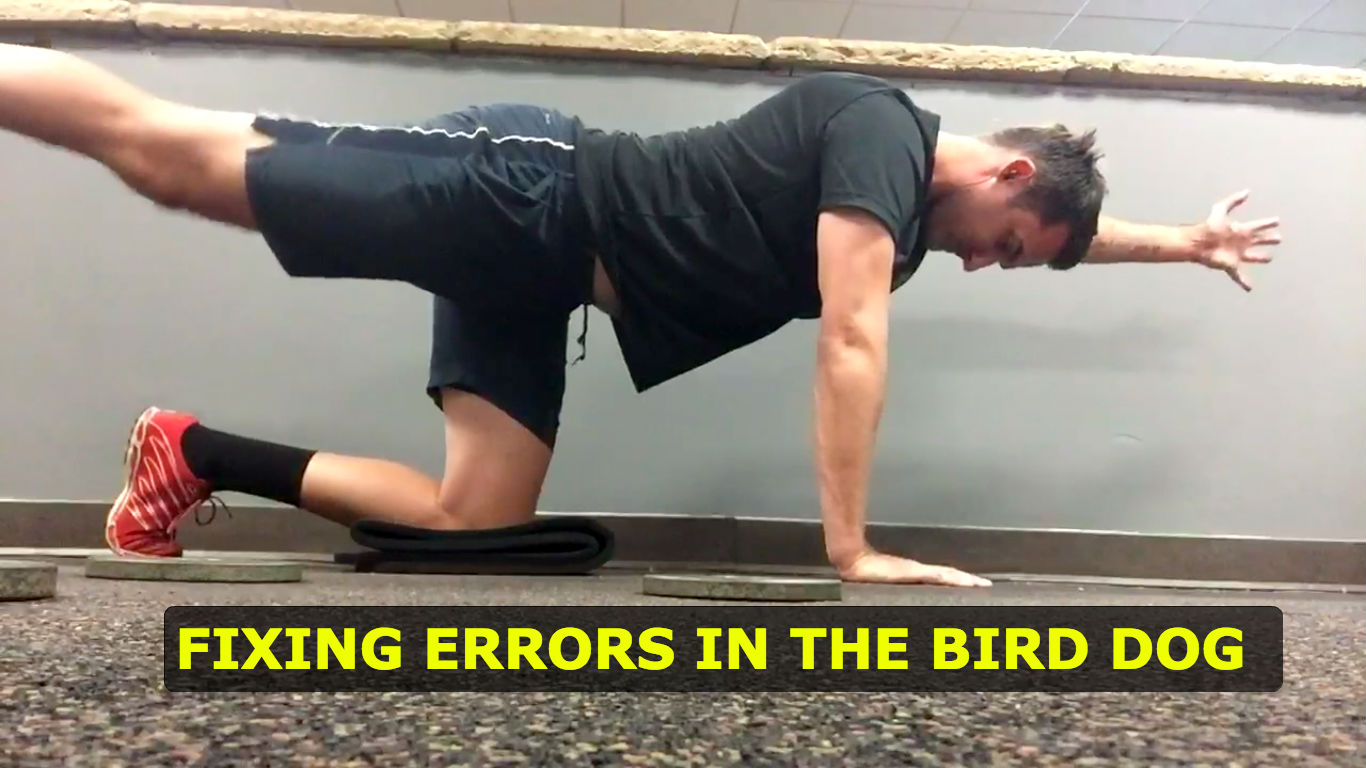In this series I will be going over some basic exercise technique, along with introducing different cues to help the following individuals become a little more successful throughout their exercise routine.
The first in this series has one of my online coaching clients demonstrating a bird dog. Now, I’m not sure why it’s called a bird dog, but it doesn’t resemble a bird, nor a dog, that much I know.
Anyway, this client needs some guidance in dissociating the lumbar extension from hip extension, along with developing tension in the abdominals while lifting off one leg and arm at a time.
If you lose position, or sesnsation of the abdominals (external obliques, internal obliques, transverse abdominis, and rectus abdomnis, to a degree) then your ability to move, ambulate, and produce force in an authentic manner may suffer.
The integration of dissociating the hips and upper body from a stable midsection can be introduced in this progression schema:
- Core Engaged Dead Bug
- Dead Bug with Wall Press
- Dead Bug
- Band Resisted Bird Dog
- Bird Dog
(Try these progressions on for size as you go through your warm-ups!)
Now you may think that adding a band in the beginning of not only the dead bug but also the bird dog will make it initially harder. This is incorrect, as the band feeds a pattern that will help introduce a more correct motor pattern.

By magnifying the specific error that may occur as a lack of abdominal facilitation, the movement pattern will become better acquainted at the level of the brain.
What Do I See?
Long story short, I see this:
- Forward head posture.
- Lumbar extension stabilizing pattern
- Lack of authentic shoulder flexion (since lumbar extension is his strategy of choice)
- Unstable pelvis and thoracic ribcage position
What Will Be My Plan of Attack?
- Reintroduce better co-activation strategies of his abdominals and mid-section.
- Think of bringing your hands down to your knees (without physically moving your hands to your knees – aka in an isometric fashion).
- Possibly regress back to Wall Press Dead Bug.
Asking Better Questions
One thing to think about is how these movement strategies in this simple bird dog exercise may pop up in other exercises that ask the body to do similar items.
From a technique point of view:
- If performing unilateral hip flexion and extension, what is the primary movement strategy of the abdominals in a step up or lunging pattern?
- If performing a push up, what is the primary stabilization strategy along the mid-section?
- What will happen when the weight gets heavy as movement patterns require more stabilization from the abdominals?
From a fitness quality point of view:
- What will happen if hip flexion and extension are introduced over a longer endurance point of view, such as in hiking, or cycling?
- Can the individual become physiologically and neurologically fatigued over time due to incorrect biomechanical positioning?
These are just a few of the thoughts that enter my head when identifying a singular movement pattern such as the bird dog. One thing to note is that perhaps this bird dog video may have been performed with no prior instruction, or even quality movement appraisal. If it is novel, then these questions may not be applicable altogether!
As always,
Keep it funky.


